Russell Hobbs RHPAC11001 Portable Air Conditioner review – tried and tested
As portable air conditioners begin to sell out, we put this in-stock Russell Hobbs option through its paces during a heatwave, with some great results
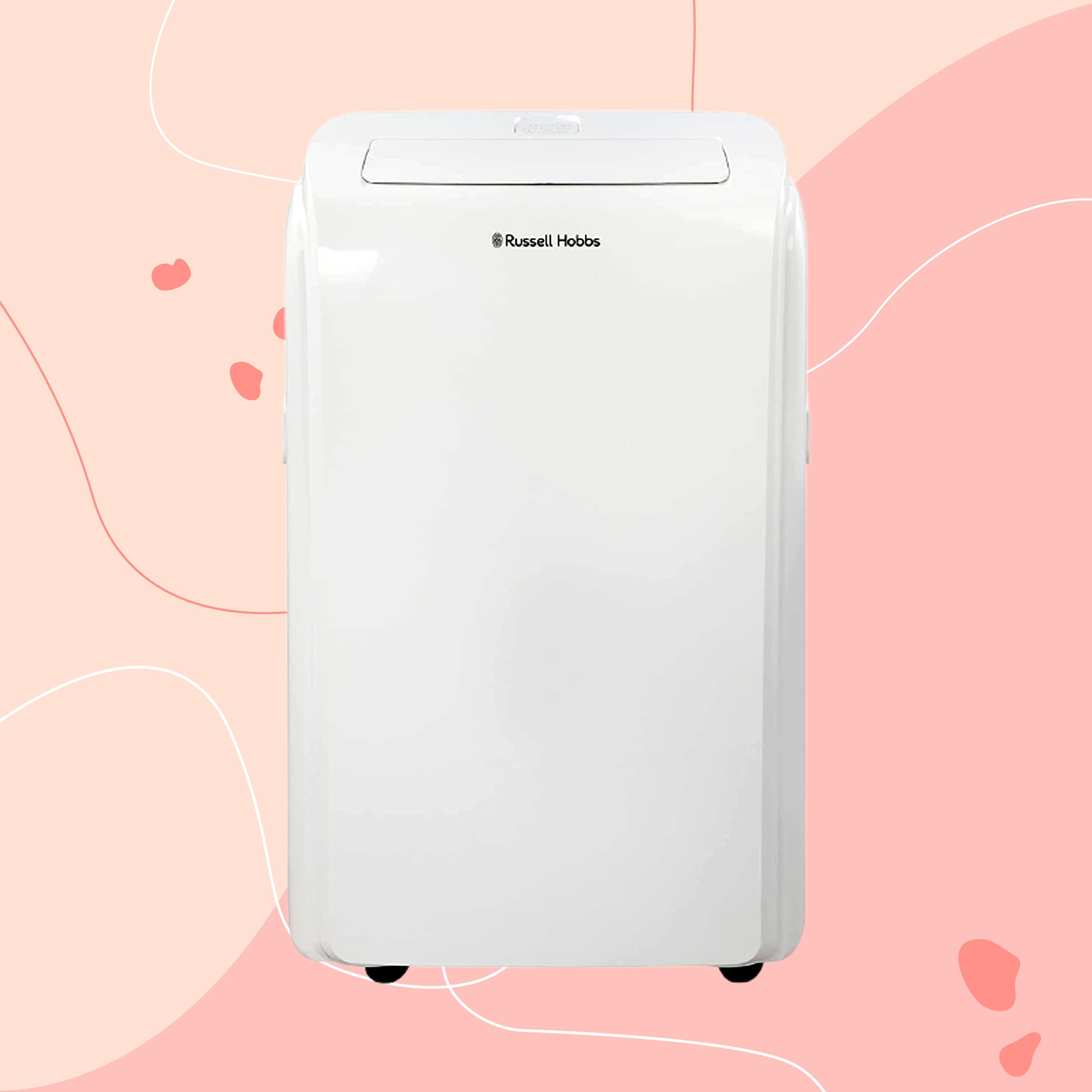
A powerful air conditioner at a mid-range price point, it's hard to fault this portable cooling unit. Even better, its 4-in-1 air con, fan, dehumidifier and heater functions make it a great investment for year-round use
-
+
Fast and effective cooling
-
+
Additional heat, fan, and dehumidifier modes for year-round use
-
+
Stylish, unobtrusive design
-
+
Easy to manoeuvre thanks to built-in wheels
-
+
Night mode for quieter bedroom use
-
+
Easy to use and programme with remote control option
-
-
Noisy (but still quieter than alternatives we've tested)
-
-
Heavy
Why you can trust Ideal Home

QUICK MENU
1. Specifications
2. Portability
3. Cooling powers
4. Noise levels
5. Ease of use
6. Verdict
The Russell Hobbs RHPAC11001 Portable Air Conditioner is the brand's most powerful portable air con unit offering 11000 BTU. That means it can suck 11000 British Thermal Units of heat from the air per hour and discharge it outside, and is capable of cooling a room measuring 13-21m2.
Generally speaking, portable air con units begin at around 7000 BTU, and not surprisingly the price increases with additional performance power. The most powerful portable air conditioners tend to be around 16000 BTU, so on paper this 11000 BTU option, whilst not cheap, is a good price for its mid-range capabilities.
In addition to cooling a room, the Russell Hobbs RHPAC11001 Portable Air Conditioner can also be used in a variety of different modes including a fan, dehumidifier, and heat setting, making it a versatile unit that can offer functionality all year round, whatever the weather.
I’ve reviewed a number of portable air conditioner units in a family home setting, so I’ve learned what makes for a more user-friendly and effective cooling experience. As such I was eager to put the Russell Hobbs RHPAC11001 Portable Air Conditioner to the test to see how it performed against the competition. I tested the unit over four weeks, assessing its performance, noise levels, ease of setup, and ease of use. Read on to find out how it performed compared to the best portable air conditioners on the market.
Russell Hobbs RHPAC11001 Portable Air Conditioner review
Specifications
- Cooling capacity (British Thermal Units): 11000 BTU
- Recommended room size: 13-21m2
- Noise levels: 65dB (this is what the manufacturer states, however on some settings we found it much quieter than this)
- Dimensions: H71.5 x W44 x D35.5cm
- Weight: 31kg
- Speed settings: 4
- Modes: Cool, Heat, Fan, Dry, Oscillating, and Night mode
- Timer: yes
- Remote control: yes
- Wheels: yes
- Window kit included: 1 x window sealing kit supplied. (It’s worth noting that this is suitable for use on UPVC windows that open internally or externally either 3 sides, or 4 sides. It says it’s NOT suitable for middle-opening windows such as skylights or wooden frames, however, some of our double-glazed windows are wooden-framed and it worked fine on them during testing).
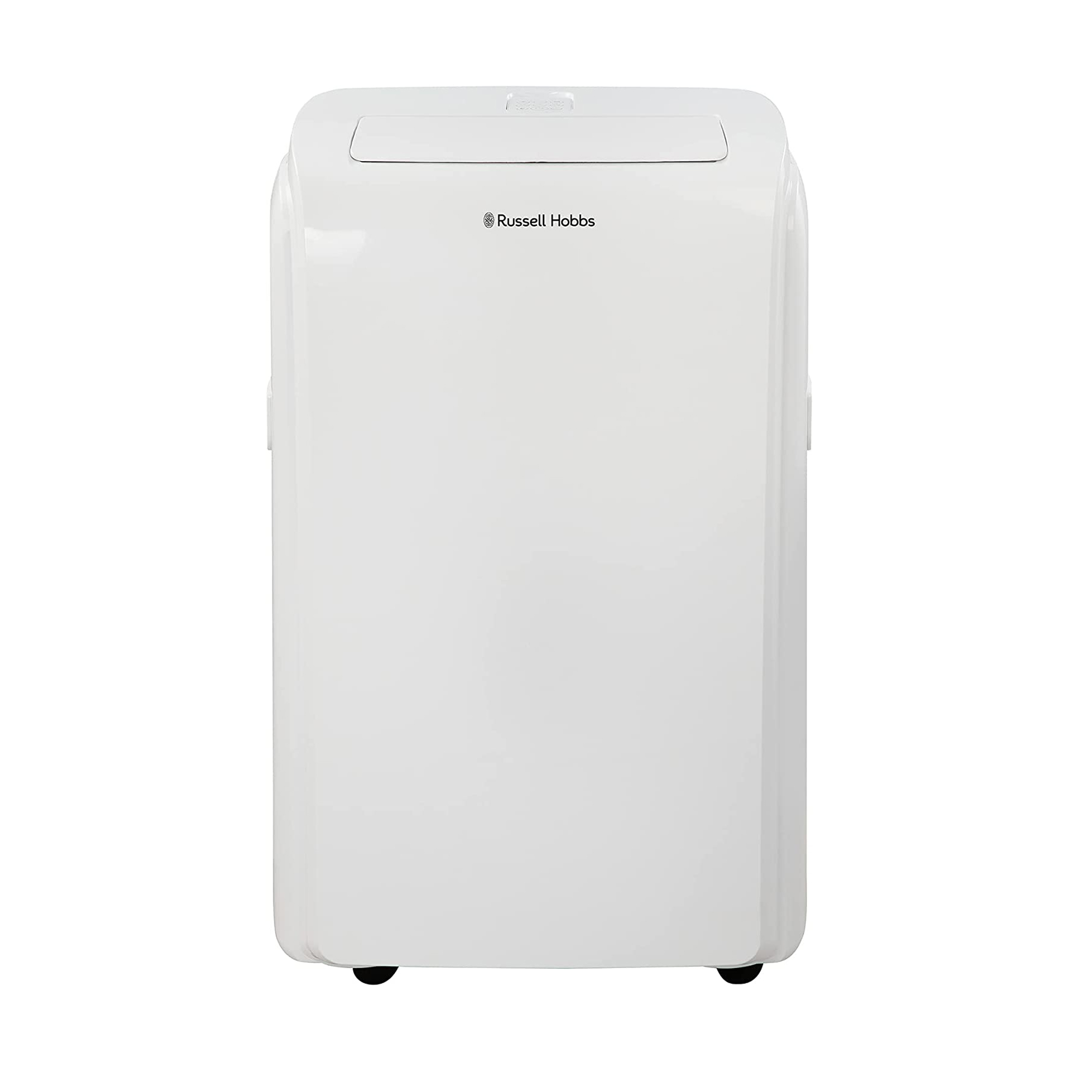
How we tested the Russell Hobbs RHPAC11001 Portable Air Conditioner

Rachel is a freelance reviewer who helps the Ideal Home team put products through their paces to find the top recommendations for our readers. She tested the Russell Hobbs RHPAC11001 Portable Air Conditioner in her family home, comparing it to bestselling air conditioning units from other leading brand names to see how well it performed against the best-in-class.
Russell Hobbs RHPAC11001 Portable Air Conditioner: unboxing
When the Russell Hobbs RHPAC11001 Portable Air Conditioner was delivered I soon discovered the box was too heavy and bulky for me to lift into the house on my own. Fortunately, my husband managed it single-handedly but it’s worth bearing that in mind when you arrange delivery, as, like most air conditioners, this unit is heavy, weighing in at 31kg.
I previously reviewed the MeacoCool MC Series 7000BTU Portable Air Conditioner, and at just 20.5kgs that unit suddenly felt extremely lightweight in comparison to Russell Hobbs' more powerful offering.
However, once inside, the unboxing process itself was a delight. Once the two strips of plastic strapping were cut, the cardboard box could be easily slid upwards to leave the air conditioning unit standing on a polystyrene base, meaning there was no awkward lifting it out of its packaging.
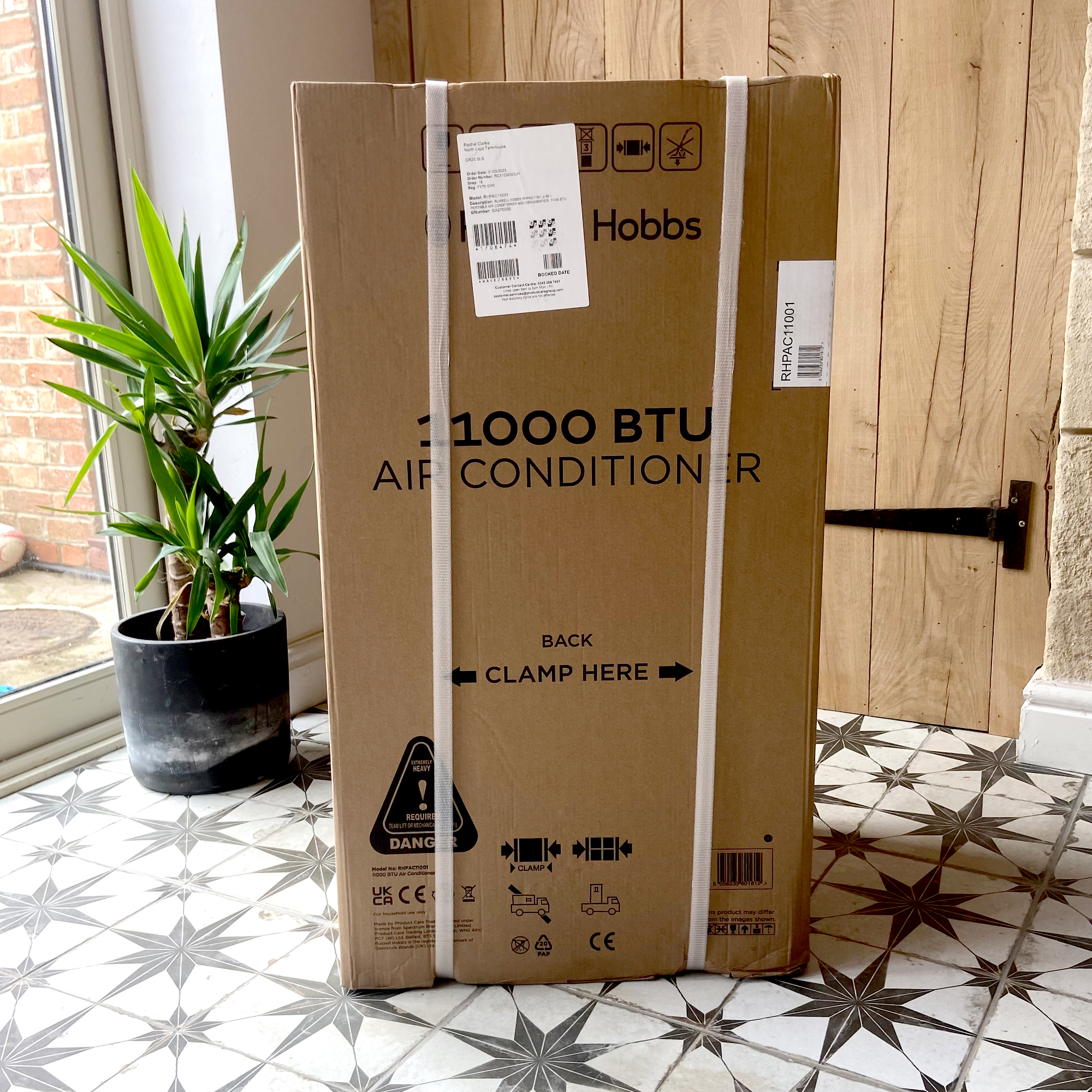
The rest of the unboxing process simply required the removal of the plastic wrapping around the unit and sliding away the polystyrene base and top. There was no wasteful inner layer of cardboard, so the box could be recycled, and just two small pieces of polystyrene that couldn’t.
Once unboxed, my first impressions of the Russell Hobbs RHPAC11001 Portable Air Conditioner were good. The design is sleek and minimalist, and despite its size, the unit moves smoothly and easily on its built-in wheels.
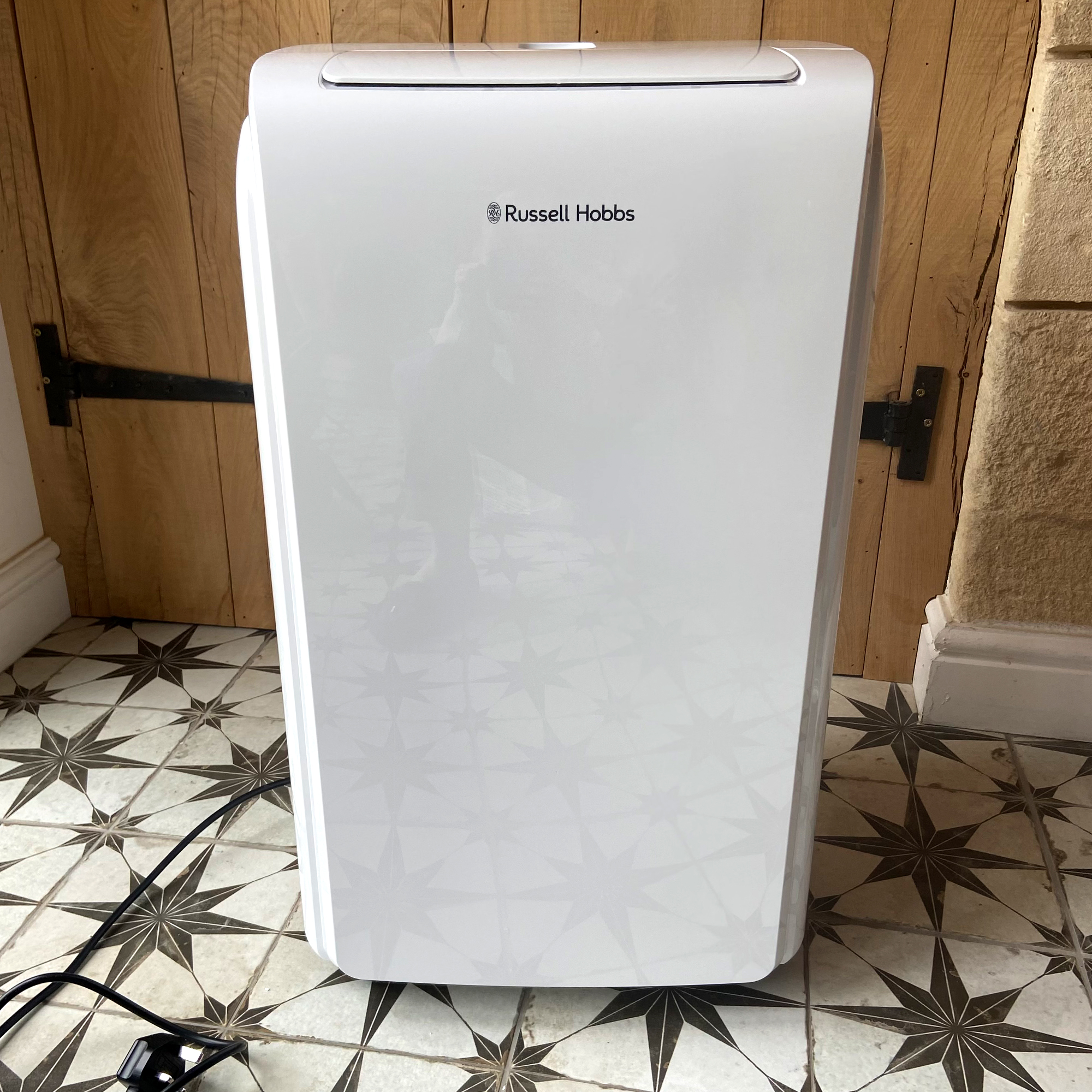
Apart from the Russell Hobbs logo, the front is plain white, and because of that it fits pretty unobtrusively into any room.
There's a small sunken control panel on the top of the appliance which can be used to control the device, but in addition to this, there is also a small remote control which handily sits neatly within this space when it's not in use. The unit looks and feels good quality and well-made.
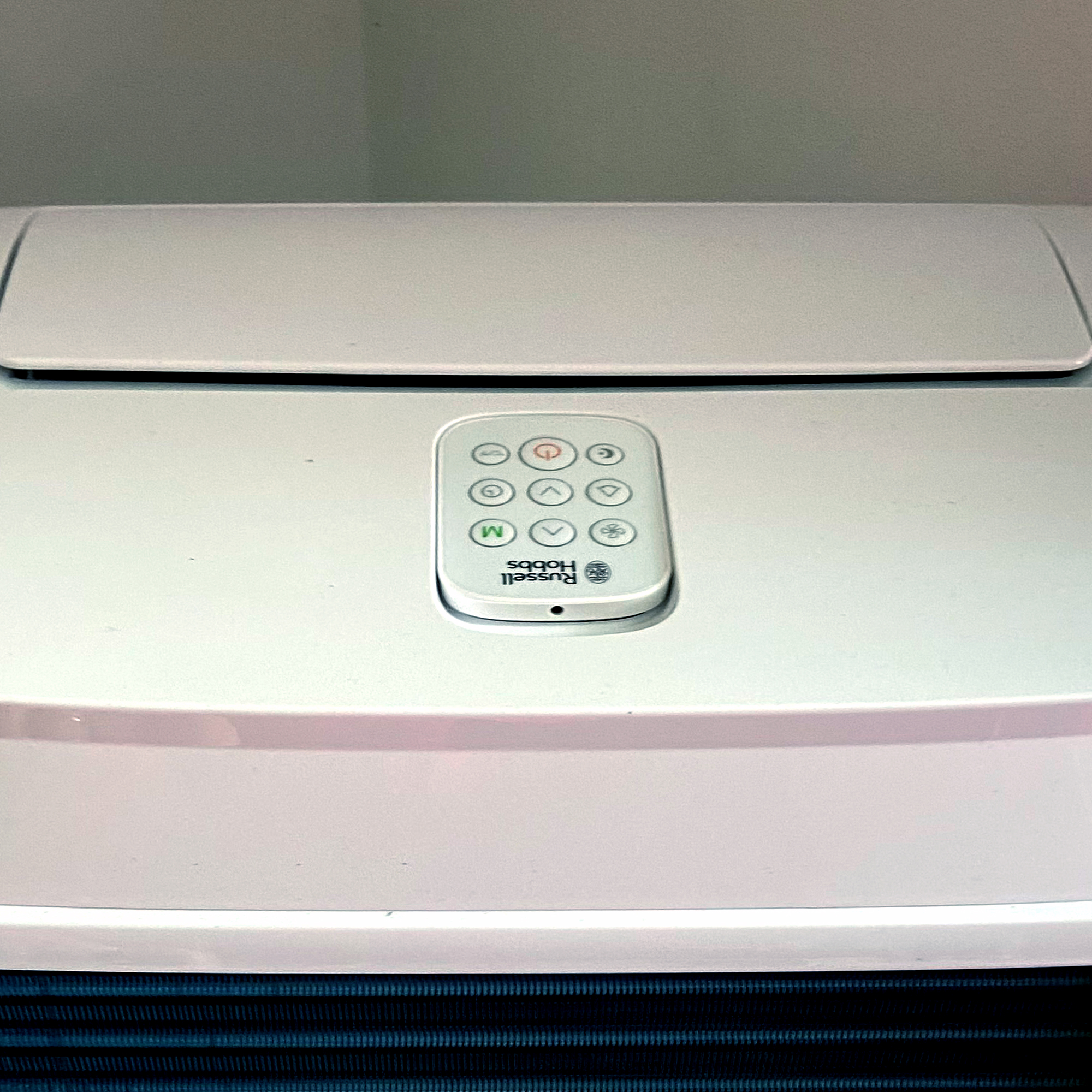
Russell Hobbs RHPAC11001 Portable Air Conditioner: assembly
The Russell Hobbs RHPAC11001 Portable Air Conditioner unit itself doesn't need any assembly, however, if you’re using it to exhaust hot air either on Cool mode (the air conditioning function) or Dry mode (its dehumidifying functionality) then you need to attach the exhaust hose to the unit.
Everything you need to do this is included in the accessory pack, and the process for fitting the exhaust hose is clearly explained in the information booklet and takes just a few minutes.
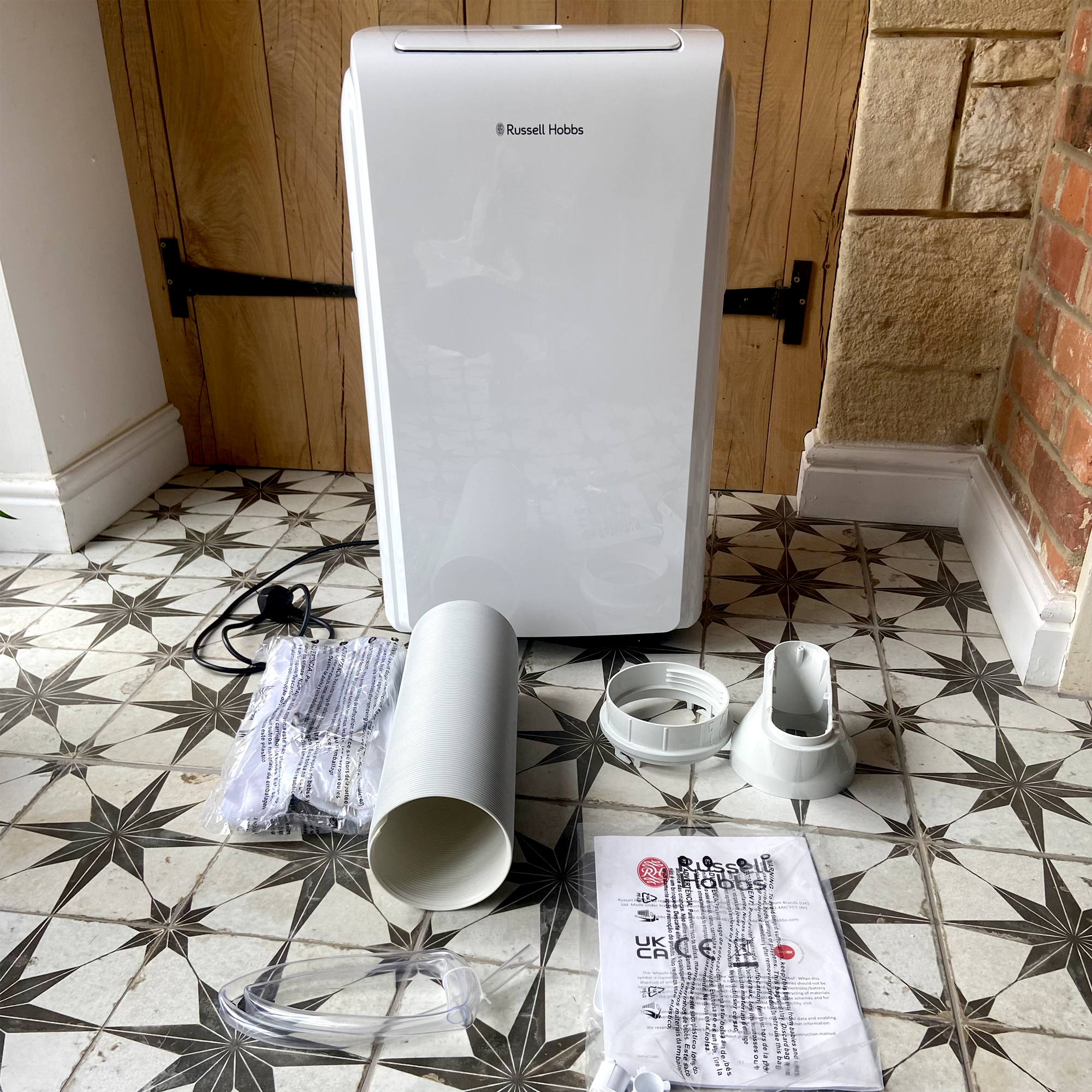
The fitting process involves extending either side of the hose and then screwing the plastic hose inlet to one end, and the plastic hose outlet to the other end. Then, the hose inlet can be clicked into place on the unit. No tools are required to do any of this.
A window kit is included however the assembly and installation of this is slightly more involved and fiddly, so make sure you allow time for this.
If I’m honest I had to re-read the instructions for this window kit a few times to get my head around it, and also looked up some images online but once I got started it was more straightforward than I thought.
First, you need to apply the Velcro tape supplied on both the outside frame of the window opening and inside the frame of the window. Then you use the Velcro to attach the long side of the seal kit to the outside frame, and the short side to the inside window. Open the window to check it’s sealed properly and the zip is accessible.
After that, you just thread the hose through the unzipped opening and close the zip around it.
One of the windows I tried it installing it in was particularly large, at over 145cm tall, however, there was still more than enough Velcro and the window kit was big enough to do an even bigger window as there was excess left over at either end.
The manual says that it’s suitable for UPVC windows that open internally or externally with either 3 sides, or 4 sides, and that it’s not suitable for middle-opening windows such as skylights or wooden frames. Our windows, however, are wooden-framed double-glazing and it worked fine on them.
It’s worth bearing in mind that the maximum opening dimension of the kit is 400cm, so if you’ve got an overly large window/opening then this could be an issue.
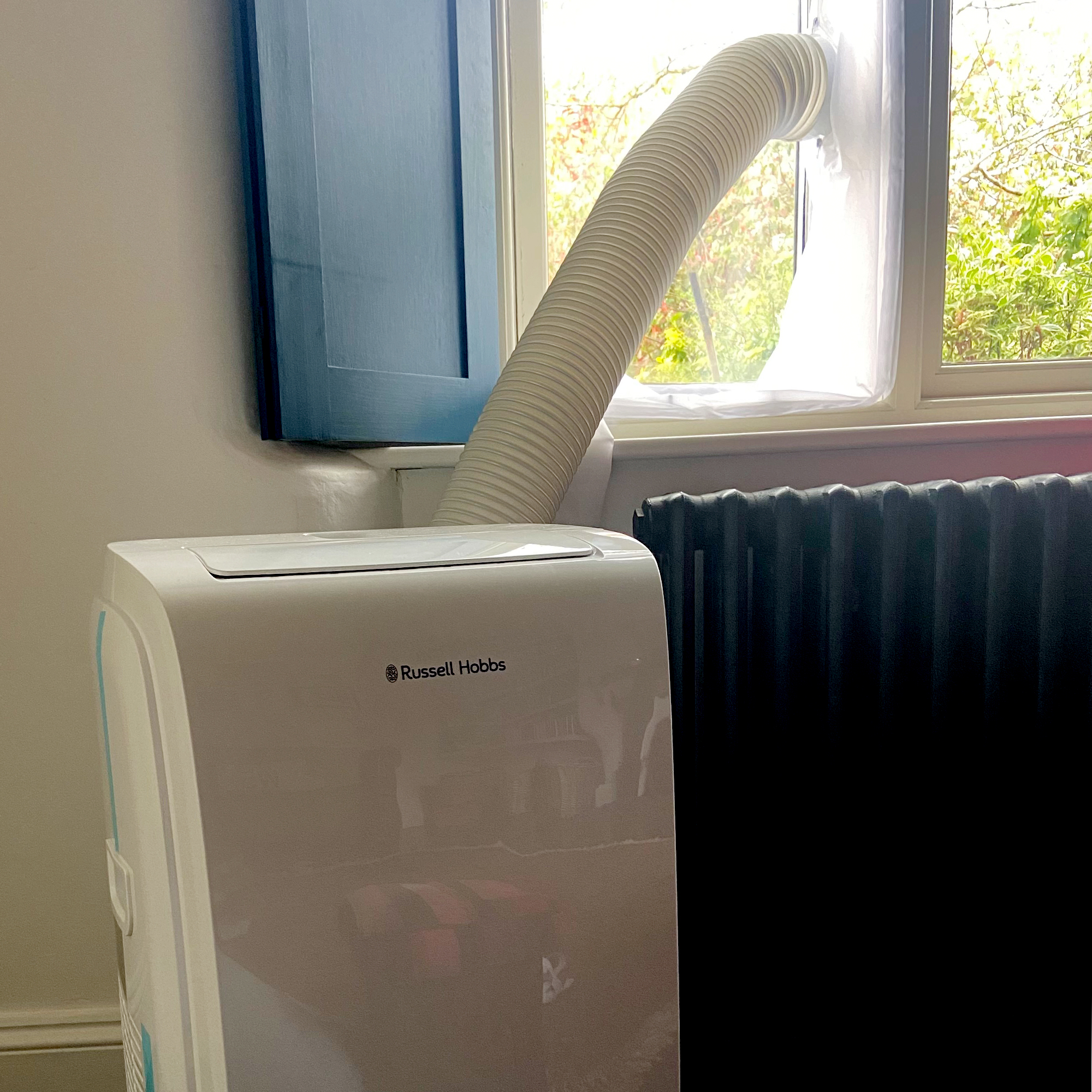
Russell Hobbs RHPAC11001 Portable Air Conditioner: performance
Next, I put the Russell Hobbs RHPAC11001 Portable Air Conditioner through its paces on all of its different modes and settings to test its portability, cooling powers, noise levels, and ease of use.
Portability
The Russell Hobbs RHPAC11001 Portable Air Conditioner weighs 31kg, which isn’t a problem when you’re wheeling it around on a flat surface thanks to its built-in castor wheels. However, the likelihood is you will want to use this in a bedroom, which if your house is two-storey will mean hefting it upstairs.
It can be hard to imagine what 30+kg of weight equates to in real terms, but to give you a gauge, that’s heavier than my 10-year-old child and felt even more so when trying to manoeuvre it up our steep, narrow staircase!
Again, I couldn’t do this on my own so if you’re as strong, (or weak) as me, it’s definitely a two-person job.
Cooling powers
Obviously, the reason that most of us invest in an air conditioning unit is in order to stay cool, and I couldn’t fault the cooling power of the Russell Hobbs RHPAC11001 Portable Air Conditioner when operated in 'Cool mode' its air conditioning function.
The unit has a cooling capacity of 11000 BTU meaning it can suck 11000 British Thermal Units of heat from a room 13-21m2 in an hour. Most air conditioning units start at around 7000BTU and can go up to around 16000BTU, so this mid-range air conditioner is a good size and power option for most homes, balancing performance with price. (The higher the BTU the more expensive the air conditioning unit will be).
For the most effective results in this mode, you need to make sure that the doors to the room you're using it in are closed and the hose is positioned out of the window using the window kit supplied. Whilst this is a bit of a faff to install the first time, once it’s up you can leave it in situ ready to use next time you want to switch it on.
When positioned in a 4.5m by 4.5m room (approx. 15ft square) with higher than normal ceilings, the air con unit reduced the temperature by approximately two degrees Celsius in just ten minutes, making an almost immediate and noticeable impact. Of course, this temperature decrease became more significant with the unit running over a longer period of time.
In one of our larger rooms which has higher ceilings it took longer to get the temperature down, but once it was down the air conditioner maintained the cooler temperature well.
Noise levels
The biggest bug-bear with most portable air conditioning units is their noise.
When I first turned on the Russell Hobbs RHPAC11001 Portable Air Conditioner my kids moaned that they couldn’t hear the TV with it on and turned the TV up quite a few notches in order to hear it over it.
Officially the unit is described as having a 65dB volume, which to be honest didn’t really mean anything to me initially. In practical terms in some modes it sounded quieter than a vacuum cleaner but louder than the ‘fridge’ that one person described it as in an online review.
I tested it using a sounded-measuring app I downloaded on my phone and when I was sitting one metre away the sound registered less than 50dB in all modes and fan speeds. If you’ve got it on during the daytime you get used to it, however, it would prove problematic if you were trying to take a call or listen to the TV or radio with it close by.
However, if the noise level is an issue for you then the great thing about the Russell Hobbs RHPAC11001 Portable Air Conditioner is its Night mode function. Ingeniously, this feature not only reduces the brightness of the display screen so that it doesn’t light up the bedroom at night, but it also means the unit works more quietly and keeps the fan speed low so that it doesn’t disturb your sleep.
Ease of use
The Russell Hobbs RHPAC11001 Portable Air Conditioner can be operated either via the controls on the top of the unit, or its handy remote control that works up to 7m away. Helpfully, the remote control comes with batteries already in it so it’s ready to use.
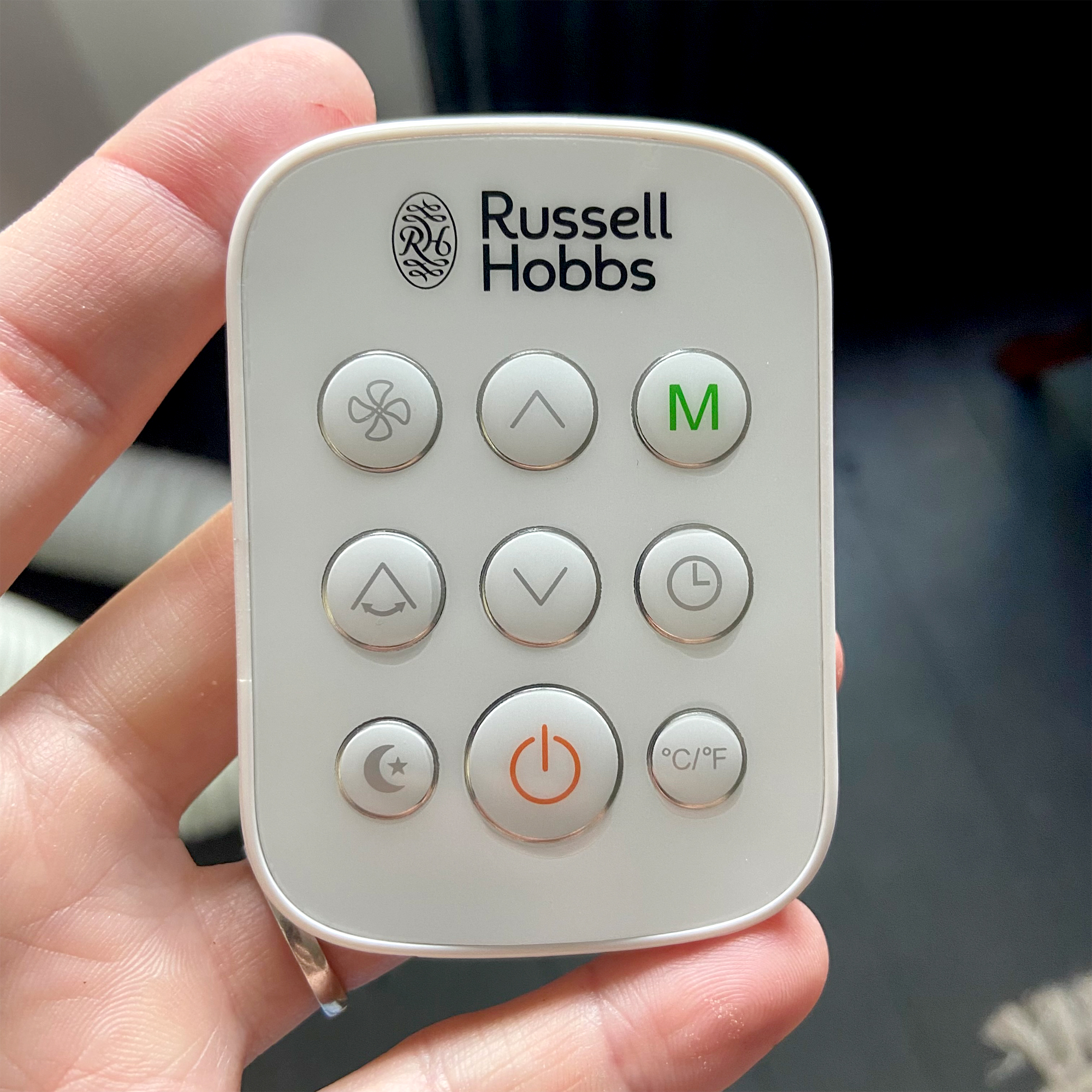
Whichever controls you opt for, the unit is very easy to use and it's simple to select which mode and fan strength you want.
The unit features an illuminated display on the front of the unit itself, so once you’ve chosen a mode/fan speed you can easily see which setting is selected.
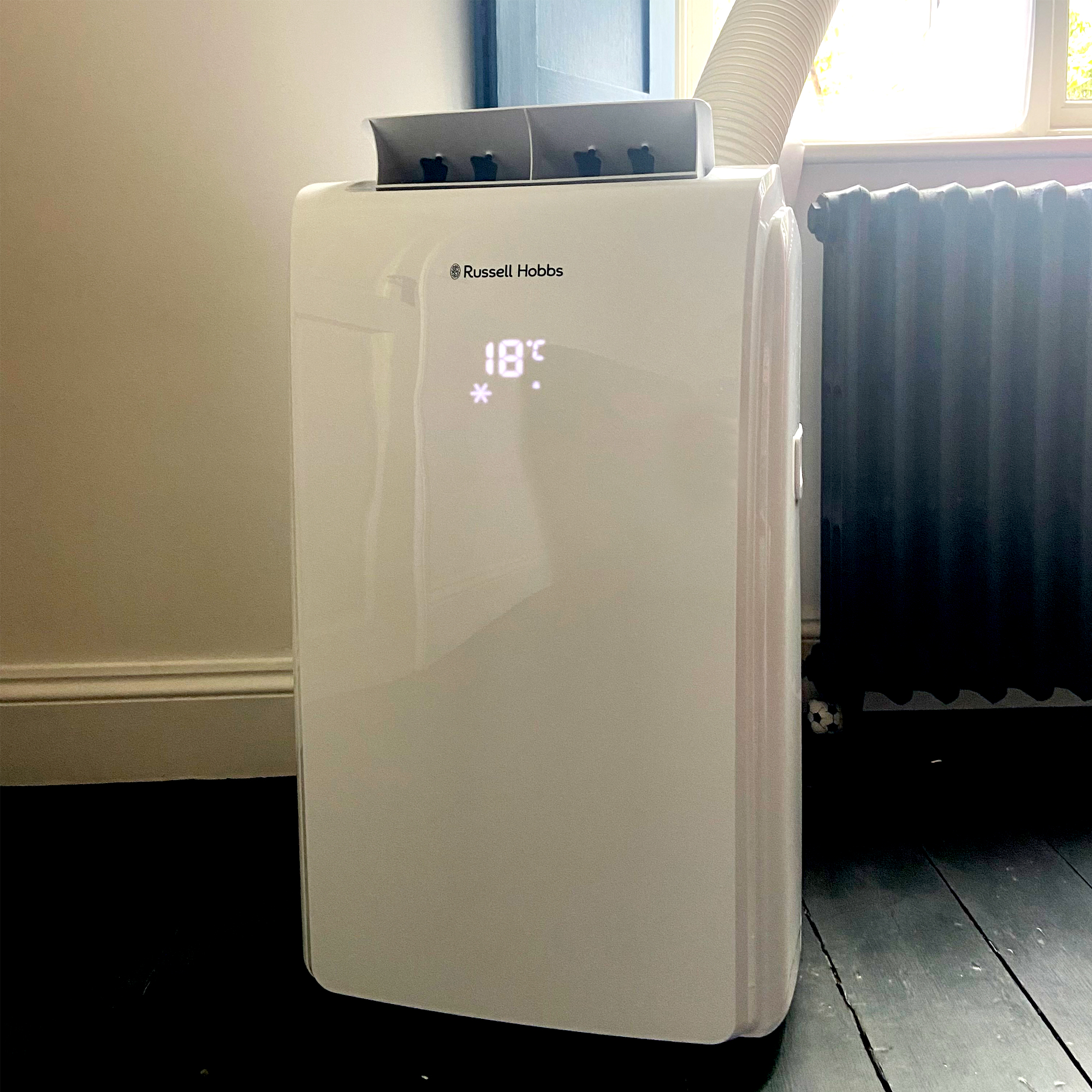
One of the USPs of this unit is its 4-in-1 multiple functions, so I made sure to test each one out to see how well it performed and how user-friendly each was to operate.
I've already described the unit's expert cooling powers in the Cool air conditioning mode, so next it was onto the unit's Fan mode which was just as easy to operate. In this mode, the unit doesn't require the exhaust hose to be fitted, so it can be positioned anywhere in the room so long as it’s close to an electric socket. It may not have quite the functionality of some of the best fans on the market, but it certainly provides an instant blast of air which does have a cooling effect.
Dry mode is the unit's dehumidifying function. The set-up for this is the same as Cool mode in that you need to make sure the exhaust hose is positioned out of the window so that the moisture can be dispelled. Although the brand does say that you can also use it without (see below). The dh symbol appears when it’s in this mode and it’s worth noting that you can’t select the fan speed in this mode as the appliance selects it automatically. Whilst it’s hard to precisely measure how effectively it worked, we tried it when we had an airer of damp washing in the room and just like when using one of the best dehumidifiers, the atmosphere felt far less damp with the unit running.
Last up, there's HEAT mode, the functionality that sets this unit apart from many cheaper alternatives and ensures the investment offers year-round use. Although it’s probably not the primary reason you would buy an air conditioner, when switched into this setting it did a good job at warming up the room in a matter of minutes. In fact, in just ten minutes it warmed the room from 16 degrees Celsius to approximately seventeen, and the room felt noticeably warmer. You don’t need the air-conditioner hose for this mode, which makes it easier to position in any part of the room, as long as you’re by a plug socket.
The unit also offers the brilliant Night mode that reduces the brightness of the display screen so that it doesn’t light up the room, and makes the unit work more quietly. The fan speed stays on low during this mode so that the noise is reduced and there's less to disturb your sleep.
When the unit is in Cool mode and you select the Night mode function then the selected temperature will increase by 1 degree Celsius per hour over two hours. The new temperature will then be maintained for the next six hours after which it will turn itself off.
There’s also the option of the Timer function which allows you to schedule a specific time to start or turn off the appliance. Like all of the settings, this is straightforward to use and programme.
Maintenance
When there’s too much water condensation in the unit then it will stop running and ‘Ft’ for Full Tank, will come up on the display to alert you to the fact that you need to drain the water.
This didn’t happen during the time I was testing the unit, however, judging by the instructions in the manual, draining is a simple operation and just involves unplugging the unit and removing the lower drain plug at the back of the unit and letting the water drain into a tub or pan.
You can clean the unit itself by wiping it over with a damp cloth, just avoid using water to wash it as it's an electrical appliance.
The instructions state that you should clean the air filters every week in order to remove dust and fibres which can impact the effectiveness of the unit. It was easy to remove the filters from the rear of the unit to vacuum them. If it’s very dirty the advice is to wash it in warm water and leave to dry fully before attaching.
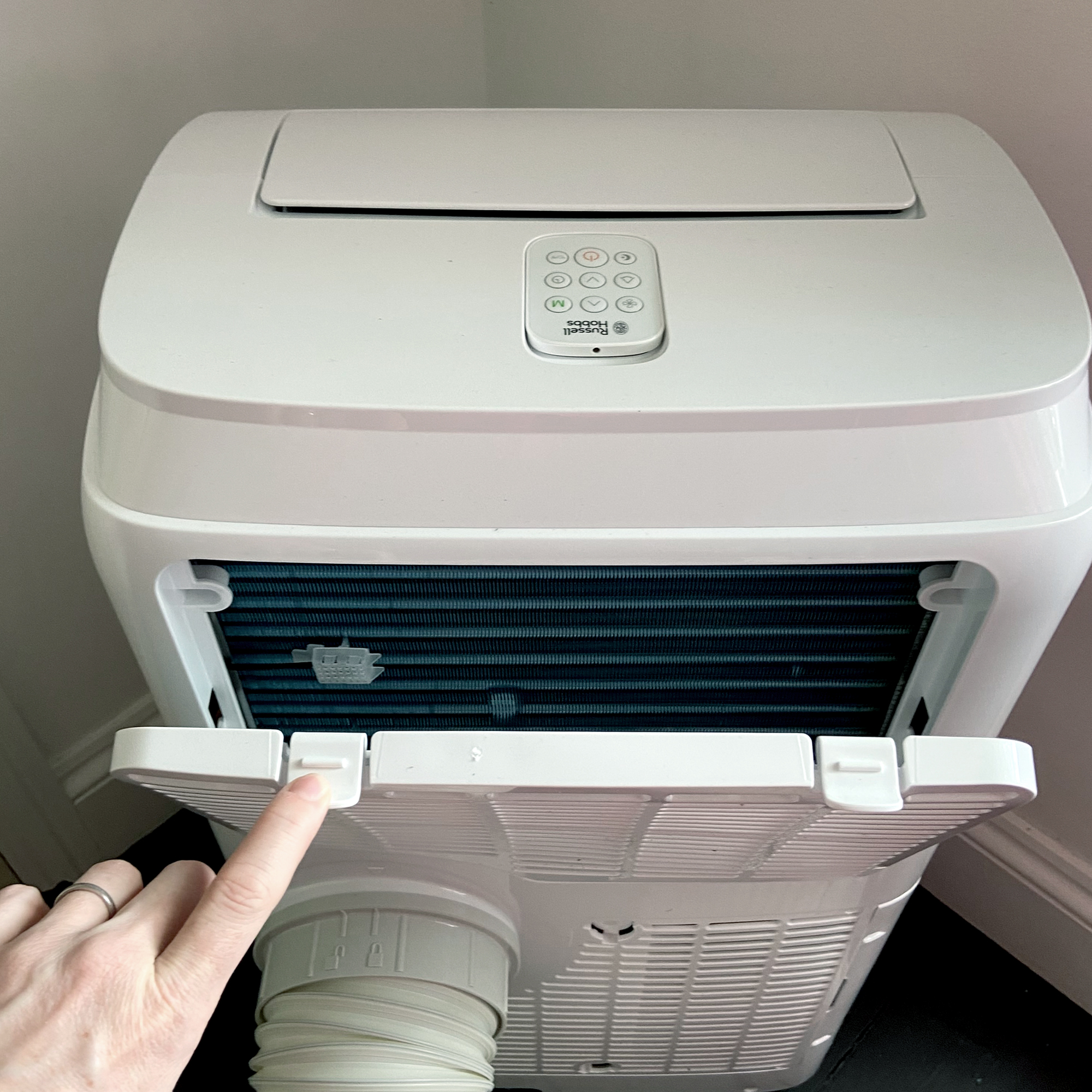
When it comes to storing the Russell Hobbs 11000BU Portable Air Conditioner when its's not in use, it takes up roughly the same amount of space as a small bedside cabinet.
It fitted neatly in ours and our children’s bedrooms and could be easily wheeled into a cupboard when not in use. There are two handy hooks on the back to wind the power cable up when not in use too, and the hose can be quickly and easily unscrewed and concertinas down to approximately 40cm long for easy storage.
How does the Russell Hobbs RHPAC11001 Portable Air Conditioner rate online?
On Amazon, the Russell Hobbs RHPAC11001 Portable Air Conditioner has an average 4.2 star rating out of 210 reviews. Out of these, 59% of the ratings are 5 star.
A lot of the reviews credit it for successfully reducing the temperature in a room, and one comments on how efficient it is: ‘This is very efficient, it says it draws 1.2kw, but I've measured it at most to be 900w... very ideal if you're like me and are limited to power consumption.’
A couple of reviews mention the air con unit's noise, with one reviewer saying they needed to turn the TV volume to hear over it. Another says: ‘It sounds more like a loud fridge, so if you can sleep hearing that you shouldn't have any issues.’
A different reviewer focuses on the dehumidifier function of the unit, saying: ‘The instructions for the dehumidifier function was limited to a few sentences in the manual, so after calling Russell Hobbs, I realised that in order to use the dehumidifier, you still need to vent the massive tube out of an open window every time (not practical for daily use). There’s no actual compartment to empty the condensed water, this is done via a hose which needs to then lead to an outside drain (this really needs to be made clear on the description). The dehumidifier function is very complicated and inconvenient.’
However, I queried this point with the manufacturer and was told that in 'Dry' dehumidifier mode it is optional for the drainage tube to be attached to the unit because the unit has an in-built (non-removeable) water tank that will collect the condensed water when the drain is plugged. Upon reaching the tank's full capacity “FT” will display and the unit will stop. It can then be drained using the drainage hose provided.
How does the Russell Hobbs RHPAC11001 Portable Air Conditioner compare to similar models?
This unit is slightly larger than other brands and models I've tested, however, at 11000BTU it is significantly more powerful, so for the increased size – and price – you're getting a lot more heat-eliminating power.
Noise-wise, according to the specs in the user manual the Russell Hobbs RHPAC11001 Portable Air Conditioner should be louder than alternatives like the MeacoCool MC Series 7000BTU Portable Air Conditioner I tested. However, when I positioned both units a metre away from me and tested them one after another, the Russell Hobbs option 'felt' the quieter of the two. I then used a sound-measuring app on my phone to compare them properly (disclaimer; I can’t vouch for the reliability of the app) and the Russell Hobbs unit read approximately five decibels quieter on Fan mode (both at low and high speed) and its Cool air conditioning mode.
Russell Hobbs also offers a smaller 7000BTU air conditioner that has 3-in-1 functionality, allowing you to switch between air conditioner, dehumidifier, and fan. This could be a cheaper alternative for smaller rooms – it's recommended for spaces measuring 8m² - 14m² as opposed to the 11000BTU's 13-21m2 capacity – with a roughly £100 saving in cost. However, the Russell Hobbs RHPAC11001 Portable Air Conditioner also includes a heater function that could come in very useful during winter time, making it a versatile year-round investment.
Verdict
The Russell Hobbs RHPAC11001 Portable Air Conditioner did a fantastic job at cooling a room quickly during my testing.
It was easy to use and fast to get working, and whilst you can find cheaper portable air conditioners out there, its 11000BTU performance is powerful stuff making it a solid performer in smaller rooms, and able to cope with cooling larger areas too.
The unit is sleek, well designed, and feels good quality – from the unit itself to the handy remote control. It’s easy to manoeuvre thanks to its built-in wheels which make life much easier, you'll just need to factor in its weight, but this is part and parcel of most air con units.
Noise-wise, both I, my boys, and my sound-monitoring app agreed that it was the quietest portable air con unit we’ve tested so far. Although you’ll still need to turn the TV up whilst it's on, it's not deafening. The Night mode which reduces the noise and brightness of the display for bedtime use is also a great benefit for light-sleepers or people with children.
In addition, as well as the dehumidifying and fan functions, this unit also includes a heater function. You may not want anything to do with that during a heatwave, but it means your investment isn't just for summer use, and allows the unit to earn its keep all year round.
Get the Ideal Home Newsletter
Sign up to our newsletter for style and decor inspiration, house makeovers, project advice and more.

After graduating with a BA Hons in English Literature from The University of Leicester, in 2002 Rachel Tompkins studied for a Postgraduate Diploma in Periodical Journalism at City University, London. She began her journalism career as a staff writer on women’s weekly magazines before leaving her Features Director role to go freelance after having her son in 2012.. Now the mother-of-two lives in Oxfordshire and writes in a freelance capacity across a range of national newspapers and magazines.
-
 I'm a kitchen decor editor and didn't like this tableware trend - until I saw H&M Home's designer-look plates
I'm a kitchen decor editor and didn't like this tableware trend - until I saw H&M Home's designer-look platesThey made it easy to justify a new crockery set
By Holly Cockburn
-
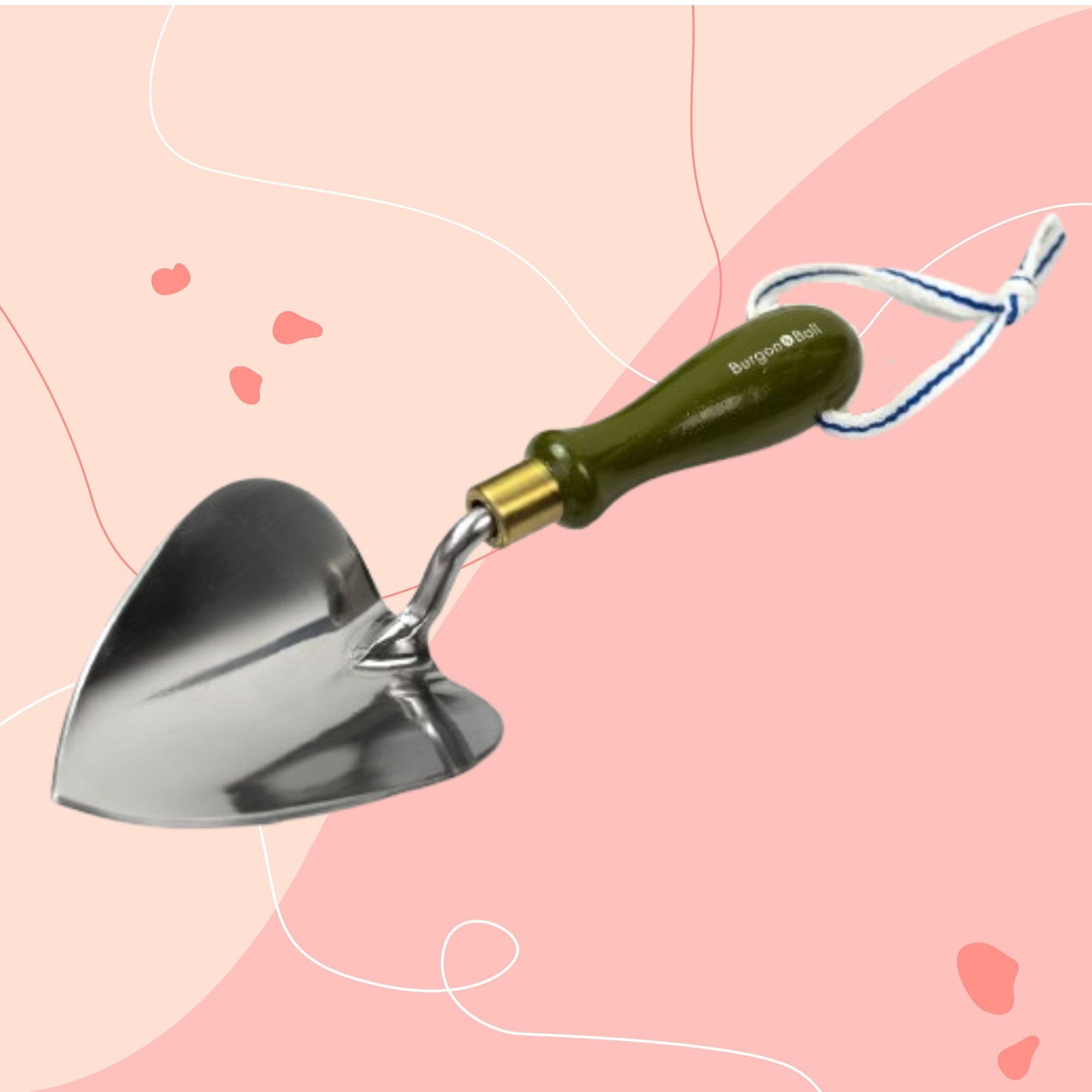 I was introduced to this clever heart-shaped trowel 2 months ago, and now I'll never garden without it – it's made planting seedlings so easy
I was introduced to this clever heart-shaped trowel 2 months ago, and now I'll never garden without it – it's made planting seedlings so easyIt's affordable and stylish
By Sophie King
-
 Have we just had a sneak peek at Ninja's plans for pastel air fryers? These new US-exclusive Crispi colours are giving us hope for the same in the UK
Have we just had a sneak peek at Ninja's plans for pastel air fryers? These new US-exclusive Crispi colours are giving us hope for the same in the UKNinja's spring colours collection i the US has sparked some serious appliance envy
By Molly Cleary